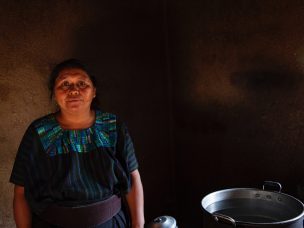Contributions
Reducing Pregnancy-Related Attacks From NMOSD
Neuromyelitis optica spectrum disorder (NMOSD) is an autoimmune condition that affects the central nervous system and can be particularly dangerous in pregnant women. The effects of NMOSD can be harmful to both the mother and the fetus, with an increased risk of relapse and disability. While immunosuppressive therapy is the cornerstone of treatment for pregnant...
Differences in the Pathogenesis of NMOSD
Neuromyelitis optica spectrum disorder (NMOSD) is an autoimmune disorder that manifests as inflammation of the optic nerves and central nervous system. Cases of NMOSD can typically be diagnosed with an antibody test for myelin oligodendrocyte glycoprotein (MOG) or aquaporin-4 (AQP4). Most cases are AQP4 antibody–seropositive NMOSD, with a mean age of onset of 40 years...
Is Race Linked to Worse NMOSD Outcomes?
The prevalence of neuromyelitis optica spectrum disorder (NMOSD) is higher in racial minority groups than in white populations, with varying disease manifestations and severity. Moreover, limited data suggest that NMOSD has an earlier age of onset and tends to have worse outcomes in racial minorities. This retrospective study, published in Neurology, sought to address doubts and...
Systemic Corticosteroids Tied to Vaso-Occlusive Episodes in Sickle Cell
For patients with sickle cell disease (SCD), systemic corticosteroid exposure is associated with an increased risk for hospitalization for vaso-occlusive episodes (VOEs), according to a study published in Blood. Ondine Walter, from Toulouse University Hospital in France, and colleagues examined the risk for hospitalization for VOE associated with systemic corticosteroid exposure in patients with SCD....
Male Teens With Sickle Cell Disease Unaware of Related Fertility Issues
Many adolescent and young men with sickle cell disease (SCD) and their caregivers are unaware of fertility concerns associated with the disease, according to a study published in Blood Advances. Leena Nahata, M.D., from The Ohio State University in Columbus, and colleagues conducted a pilot trial to examine knowledge and perspectives on fertility testing among...
Oral Molnupiravir Found to Improve COVID-19 Outcomes
The medical community needs new treatments that can lower the chance of COVID-19 worsening in patients. One emerging, promising treatment is molnupiravir—an oral antiviral. To evaluate the safety and efficacy of molnupiravir, researchers for the MOVe-OUT Study Group conducted a phase 3, double-blind, randomized, placebo-controlled trial. Study participants began treatment with molnupiravir 5 days after...
Infection Rates and Severe COVID-19 in Minorities
COVID-19 inequities in racial and ethnic minority groups have been previously studied and confirmed in the United States. Asian Americans, African Americans, Latino Americans, and Indigenous Americans/Alaska Natives are at an increased risk of contracting and dying from severe COVID-19. Structural racism may be at play when identifying the source of these disparities. A retrospective...
Racial Disparities in Patients With Cancer and COVID-19
In the general population, Black patients tend to experience more severe disease from COVID-19 than white patients. However, few studies seek to address whether Black patients with cancer experience worse outcomes from COVID-19 than white patients with cancer. Structural racism carried out through sociodemographic factors, such as underinsurance and disproportionate access to health care, may...
Racial Disparities in Insomnia Widen During COVID-19
Black Americans are more likely to experience chronic insomnia than white Americans. This disparity may result from a lack of appropriate access to care, especially during the pandemic. Moreover, the gap in insomnia prevalence may be widened by additional stress caused by the pandemic as Black Americans also experience higher rates of infection and poorer...








